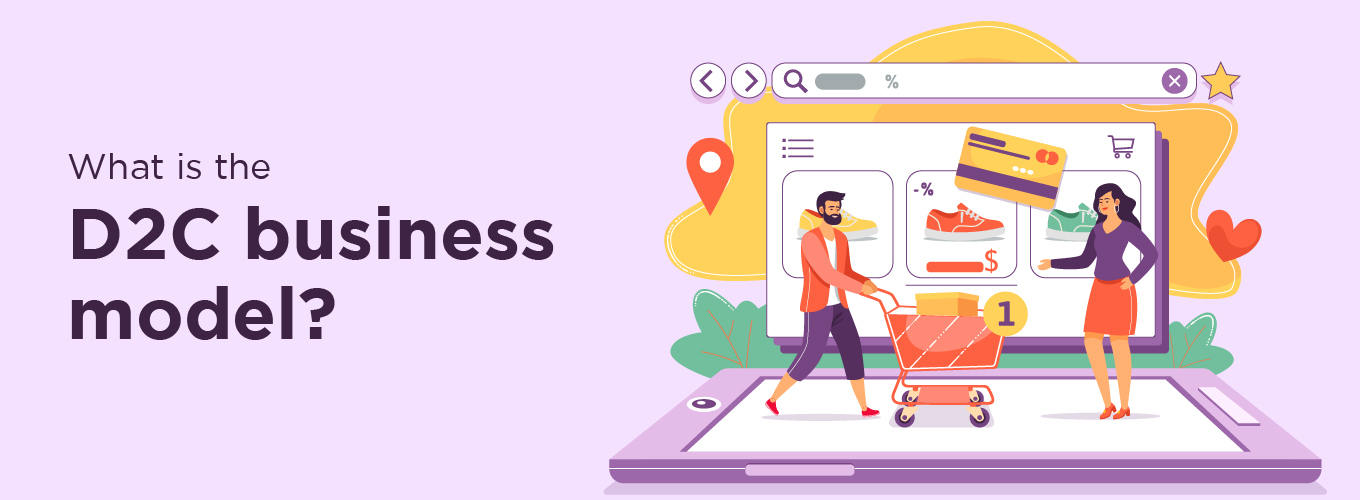What is a D2C Business Model
It is confusing when you think of B2B, B2C, and now D2C! What are these? D2C is an abbreviation for Direct to Customer, and it is a new business model.
So, what is the D2C business model and how does it work?
Traditionally, manufacturers would make a product and sell the product to a wholesaler, who would then sell it to a retailer. The retailer therefore becomes the first touch point for the consumer with the brand being sold. D2C is a business model where the brand now sells the product to the consumer directly, avoiding the wholesaler and the retailer.
Factors accelerating the growth of the D2C business model
Owing to the Covid-19 pandemic, more and more brands opted to sell directly to their customers through the internet and began being referred to as e-commerce sellers. Internet penetration and e-commerce growth in India have helped this business model grow manifold. Many well-established brands have begun looking at the D2C business model. Promotion and marketing of D2C brands typically happens through online channels, social media, and online brand stores. All these functions are handled by the brand itself, thereby avoiding external influences like distributors, wholesalers, and retailers. This helps emerging brands produce, pack, distribute, and ship their products themselves without having to share margins with anyone else. Everyone from wine makers to fashion designers is using the D2C business model to sell their products.
Benefits of the D2C business model
The D2C model offers huge benefits to brands.
1. Increased profit margin
Since there are no middlemen involved, it results in better control over profits since there is no loss in terms of margins being shared with retailers or wholesalers.
2. Data and feedback from end-consumer
Brands can reach their consumers directly and understand more about them. For instance, they are able to gather more targeted data on their customers, their preferences and purchase patterns. This helps the brand create more customization for the product range. It also helps gather data and feedback about the product after usage. Depending on your goal for new, frequent and loyal customers, you can offer coupons, discounts and cross-selling promotions. A customer’s previous purchases can be tracked and offers and customized packing can be offered to the customer based on their purchase data patterns.
3. Increased brand loyalty
One of the increased advantages of a D2C model is increased brand loyalty. A traditional marketplace is fiercely competitive; it is expensive to sell your product. Competition can use below-the-line techniques to convert customers’ loyalty over yours. In a D2C model, it is easier to enhance customer experience and offers multiple ways to keep them engaged with your brand.
4. Control over supply chain
It was noticed during the Covid-19 pandemic that e-commerce portals were unable to reach certain pin codes and their privacy rules do not let brands have customer data. D2C overcomes this by having tie-ups with shipping partners who have good reach and thus also have direct access to the customer. On the flip side, having complete control over the supply chain at the online store, customer acquisitions, conversions, packing, fulfillment, returns and warehousing can also mean a lot of responsibility, accountability and work too.
D2C vs traditional supply chains
The question asked often is when there are traditional supply chains, then why have a new D2C model? Traditional models have many disadvantages:
- In traditional models, a brand has to convince a retailer that their brand is good enough to be sold and worth their effort. Sale of products is not assured.
- Delay in the entire process of selling.
- No customer interactions and therefore no instant feedback mechanisms.
- More expensive. Even e-commerce players do not reach too many customers.
Therefore, the D2C business model wins all the way through and is fast being adopted by many brands worldwide and in India as well. Only one factor weighing against D2C may be the high marketing costs involved.
Also Read: What Is Talent Acquisition
The challenges
D2C has become a highly successful business model. However, without the brick-and-mortar stores peddling their wares, D2C brands must work very hard to establish themselves and make a name. Many D2C start-ups spend a lot of money on paid marketing campaigns to spread the word about their brand. They also rely a lot on social media influencers. This can be an expensive and difficult battle.
The D2C business strategy presents unique obstacles and is not for the faint of heart. It takes a lot of effort and imagination. The D2C paradigm is here to stay in today’s environment, when conventional rulebooks are being challenged in every field. The Xpheno specialist staffing service assists direct-to-consumer enterprises in employing the best possible workers.
Conclusion
The aforesaid major characteristics are assisting businesses in creating better consumer experiences and changing how we think about making a business. Making a D2C pivot is a terrific approach for organizations with an established client base and proven services to innovate, cater to new consumers, and develop beyond their core offers. Proper planning, validation, and management may help mitigate some of the risks involved with this approach, opening up a wealth of opportunities for businesses to explore with new offerings and services.









